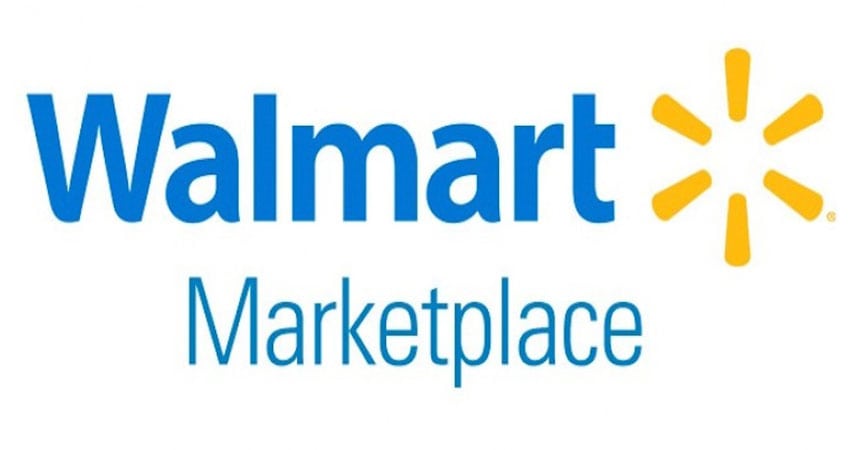When Amazon first introduced its online marketplace, retailers had an opportunity to reach consumers in a new way, and those that took advantage were able to develop their customer base and grow. For brands that want to get in front of customers today, Walmart presents a similar, greenfield opportunity.
Brands that carefully craft their online strategy by using what was learned from Amazon and who understand how the Walmart marketplace operates will ultimately be the ones that grow and expand now.
As the market leader, Amazon’s marketplace has matured quickly, making it more difficult for brands to increase momentum and gain market share through that platform. However, as Walmart continues to establish its brand and expand its online offerings, merchants with the right strategies have an opportunity to be long-term winners, provided they develop and refine their strategies before unbranded and third-party competition saturate the marketplace.
Both Walmart and Amazon offer branded and unbranded goods from third-party sellers, with subscription programs offering discounted or free shipping.
There are some ecommerce fundamentals that retailers should include in their strategy for Walmart.com, like optimizing quality product listings for searches; having consistent, on-time fulfillment; and maintaining competitive, low prices for their goods. While some aspects of the Walmart marketplace are similar to Amazon, understanding the nuances of Walmart’s model and offerings will help distinguish one seller’s products from another.
A new marketplace creates opportunity, and you should develop a specific strategy for Walmart.com to capitalize on it. You should also measure the success of each campaign to determine what elements need optimization and the most effective ways to reach customers. Here are 3 ways to strategize for sales on Walmart.com:
Start with Amazon Best Practices
Brands unfamiliar with Walmart ecommerce can take best practices learned from selling on Amazon and directly apply them there. Luckily, both platforms offer opportunities to produce fast, short-term results with paid advertising in addition to long-term results with in-platform SEO.
Creating a quality product listing is the first step. This is neither quick nor easy and requires a great deal of research to make sure content is optimized with the best keywords. Third-party keyword research tools can help brands identify keywords by search volume.
Next-generation research tools combine search volume with item and brand relevance, prioritizing keywords that get the most search volume and are most likely to convert the traffic. These keywords are then leveraged throughout the product detail page, including title, bullets, descriptions and metadata terms. Finally, listings must utilize high-quality images and videos and be strategically priced.
Brands selling on the Walmart marketplace should be prepared to invest in sponsored search campaigns. By using the same keyword research from creating product listings, sponsored search activity can be optimized to provide the best return on ad spend. Walmart Connect, formerly Walmart Media Group, has certain sponsored search eligibility requirements that must be met in order to bid on keyword terms. They include in stock, buy box, organic rank and other key ecommerce attributes.
You should come prepared to protect your brand, trademarks and intellectual property from infringement by third parties. Similar to Amazon, you can register as many brands as you’d like on the Walmart Brand Portal, provided they have active trademark registration with the USPTO. There are also emerging tools to help you protect IP on Walmart.com.
Leverage Strategies Unique to Walmart
You can also gear your strategies toward unique aspects of the Walmart marketplace and increase product visibility. Walmart Connect allows you to accelerate customer connections in an omnichannel environment through product, brand and omnichannel sponsorships.
You can take advantage of numerous types of product sponsorships which display items in various product search positions and on pages for either product categories or specific products. Sponsored display ads can be in the form of performance, PPC ad with elevated visibility, native banner ads that raise awareness and don’t rely on keywords, or catapult ads that display “Featured Item” under a product to distinguish the item as paid advertising. You s can also promote all your brands/products through related product pages with Walmart’s Site Search feature ads.
You can choose a “Search In-grid” or “Search Carousel” product placement, which determines where and how products appear in search results, as well as the category and product pages where they’re displayed. According to Walmart Connect, Search In-grid provides premium placement on the first page of search results, and the Search Carousel positions the product to appear on search, category and item pages as a relevant alternate purchase option (typically rotating at the bottom of a page, carousel-style).
Search In-grid is the default option, but sellers can choose Search Carousel to expand the ad’s reach and incorporate keyword-based campaigns. Items with sufficient inventory and that are priced lower than the competition, even if by a penny, can also be featured in Walmart’s sought-after “Buy Box.” The product that achieves the top qualification metrics gets this priority position.
Brand sponsorships are similar but highlight all your products. Walmart’s Search Brand Amplifier (SBA) is a premium search ad that allows customers to view a brand’s product portfolio with the goal of increasing conversion and product awareness. This PPC sponsorship helps brands launch new or seasonal products and improve performance of higher-priced products.
Omnichannel sponsorship is available through Walmart’s online circulars. These can have a wider reach than other types of advertising, as customers can share online circulars with their social media networks and become advocates for a particular brand. Word-of-mouth marketing is important for any brand because consumers prefer recommendations and reviews from people they know.
Measuring the performance of each of these sponsorship opportunities can inform campaigns on what’s working and what’s not, as well as identify new opportunities.
Optimize Omnichannel: Walmart Pickup and Delivery
Online Pickup & Delivery (OPD) is one way Walmart gives brands an opportunity to promote in-store products with digital retail media and lets them choose how they receive their orders. This combines the convenience of ecommerce with the immediacy of store shopping.
Walmart Connect is expanding sponsored search opportunities to OPD. This gives you a number of opportunities to connect with shoppers the moment they’re making purchasing decisions. A few best practice recommendations for OPD sellers include optimizing search listings, paying close attention to stock levels to avoid missed orders, and aggressively pricing items.
While there’s little room for new entrants to break out and succeed on established marketplaces, powerhouses like Walmart are creating an emerging opportunity for brands looking to gain an ecommerce foothold. Lessons learned from the Amazon marketplace can inform how you position yourself for profitability.
Nathan Rigby is Co-Founder of Analytic Index

